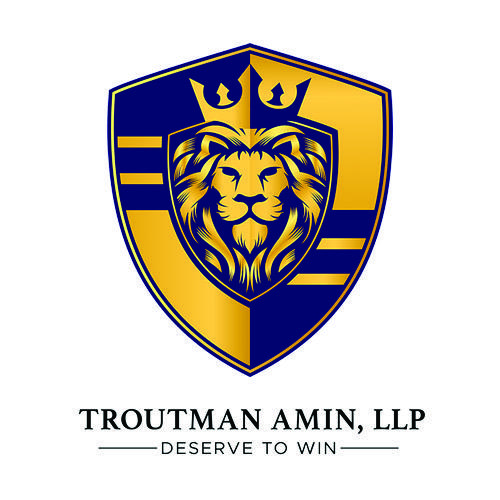X Marks the Mess: The Bizarre Saga of Brand Safety on Musk’s Social Media Circus
Welcome to Elon Musk’s messed up playground, where the once dignified Twitter has morphed into the anarchic X—a social media platform where brand safety is as real as unicorns. Imagine an ad agency’s worst nightmare: your pristine ad showing up next to hashtags like #whitepower. Yeah, that’s the reality in the world of X. And yet,
here we are with the Trustworthy Accountability Group (TAG) slapping a shiny “brand safety” sticker on this hot mess. You can’t make this up. The Circus Gets a Seal of Approval
So, Thursday rolls around and X, with all the pomp and circumstance of a royal decree, tweets that it has reclaimed TAG’s “brand safety” certification. For those not in the know, this seal of approval is supposed to guarantee that
your ads won’t be rubbing elbows with unsavory content. X, now swaggering like a tipsy sailor, boasted that it had “deployed every single brand control the marketplace has requested over the past 12 months.” Translation: “We’ve been really busy pretending to fix things.” In a world where ad placement next to hate speech is just a slip-up away, X's announcement is like a magician claiming to pull a rabbit out of a hat, while you can clearly see the strings attached. The pièce de résistance of this farce was the proud declaration: “In just one year, our team of engineers built all-new Brand Adjacency Controls and Sensitivity Settings, and established third-party measurement partnerships.” In other words, they threw a bunch of tech jargon at the problem and hoped nobody would notice the lingering stench. These fancy terms and new partnerships are nothing but a smokescreen, designed to dazzle advertisers into believing that X has suddenly become a
sanctuary of brand safety. But let's be real—dressing up a wolf in sheep’s clothing doesn’t change the fact that it’s still a wolf. Enter Check My Ads, the watchdog with a penchant for cutting through the BS. They publicly questioned X's certification last year and are now calling out TAG's decision as laughably misguided. It’s like giving a restaurant five stars for cleanliness after finding a rat in the soup. Check My Ads points out that X has been monetizing
extremist hashtags, turning a blind eye to the cesspool it has become. The reality on the ground is starkly different from the rosy picture painted by TAG’s certification. Meanwhile, Elon Musk, the ringmaster of this circus, continues to lead with the subtlety of a bull in a china shop. His free speech absolutism has turned X into a breeding ground for hate speech and misinformation. Instead of collaborating with watchdogs to genuinely clean up the platform, Musk
has taken to suing them, like a kid throwing a tantrum when caught with his hand in the cookie jar. His actions scream louder than his words—while he claims to champion free and open debate, he’s busy trying to silence any dissenting voices. At the end of the day, X’s brand safety certification feels like a cruel joke. The platform is a minefield for advertisers, who have to constantly worry about their ads appearing next to the worst kind of content. Despite the
fancy tech jargon and shiny badges, the truth is that X remains a hotbed of hate speech and misinformation. The ad industry may be willing to look the other way, but advertisers and users are left to navigate this chaotic landscape with no real assurance of safety. The future of social media, it seems, is anything but secure. Buckle up, it’s going to be a bumpy ride. The Lurking Hate Speech
It’s worth noting
that this isn’t the first time X has been caught with its pants down. NBC News reported that X has been placing ads in search results for hashtags promoting racist and antisemitic extremism. Let that sink in. Imagine logging into a platform and finding ads for reputable brands nestled comfortably alongside hate-fueled hashtags like #whitepower. It’s the kind of brand adjacency nightmare that gives marketing managers cold sweats. But X, in its infinite wisdom, has somehow managed to turn this
dystopian reality into business as usual. The sheer audacity of it is almost impressive, if it weren't so deeply disturbing. Twitter, as it was known back in the day, started placing ads in search results around 2010, pioneering a new frontier in digital advertising. Fast forward to 2023,
and users were still seeing ads amidst searches for #heilhitler. That's right, folks: more than a decade later, the platform hasn’t just failed to evolve past its questionable practices—it seems to have doubled down on them. This isn’t some isolated glitch in the matrix; it’s a systemic issue that has persisted despite numerous red flags. You’d think a company with the resources of X would have figured out how to avoid such blatant missteps by now, but apparently, common sense isn’t part of
their engineering toolkit. Yes, people actually tweeted about this, alerting X’s management to the glaringly obvious problem. These weren’t just random complaints from the fringes of the internet; they were public calls to action that anyone with a modicum of social media savvy could have seen. The fact that these issues were brought to X’s attention and yet continued unabated raises some serious questions. Were the folks at X asleep at the wheel, blissfully
unaware of the storm brewing on their own platform? Or worse, did they see the storm and decide it was just a passing shower, not worth getting out of bed for? This raises the question: were they asleep at the wheel or just didn’t care? Either scenario is equally damning. If they were asleep at the wheel, it suggests a level of incompetence that borders on negligence. If they didn’t care, it’s a brazen display of apathy towards the toxic environment they’ve
fostered. In either case, the implications are deeply troubling for advertisers and users alike. Advertisers, who place their trust in platforms like X to safeguard their brand integrity, are left navigating a minefield of hate speech and extremist content. Users, meanwhile, are subjected to a daily barrage of vitriol that X seems either unwilling or unable to effectively manage. The result is a platform that’s as chaotic as it is controversial, a digital Wild West where anything goes and brand
safety is little more than an illusion. Musk’s Wacky Antics
And let’s not forget the man at the helm, Elon Musk, whose erratic behavior makes a rollercoaster ride seem like a Sunday stroll. Musk is a maestro of mayhem on X, conducting a symphony of chaos with his every tweet. His posts, which serve as the primary traffic magnet for the platform, often venture into the
territory of bigoted and bizarre musings. Whether he's railing against perceived enemies or championing controversial causes, Musk’s online persona is a wild, unpredictable spectacle. It’s almost as if he’s embraced the role of the world’s richest internet troll, using his vast influence to stir the pot at every opportunity. Musk’s tweets are the #1 traffic source on X, and for good reason. They are a masterclass in provocation, filled with everything from alt-right rhetoric to outright fabrications. His infamous claim that fake news is rampant, combined with his frequent forays into conspiracy theories, makes his feed a veritable goldmine of inflammatory content. This isn’t some fringe account with a few thousand followers; we’re talking about a platform with 181 million
followers, where each tweet can send ripples through the digital landscape. It’s like handing a megaphone to a toddler on a sugar high and expecting coherent discourse. From claiming fake news to spouting alt-right rhetoric, Musk’s antics are as predictable as a toddler on a sugar high. One day he’s lamenting the state of the media, the next he’s posting memes that range from the absurd to the offensive. His disdain for traditional journalism is well-documented,
and he often takes to X to mock reporters and media outlets that dare to criticize him. But it’s not just the media in his crosshairs; Musk has also been known to attack political figures, business rivals, and even his own customers. His free speech absolutism has turned X into a free-for-all, where misinformation and hate speech thrive under the guise of open dialogue. He’s got 181 million followers, and he uses this massive platform to post memes, lies about his
age, and generally act like the world’s richest internet troll. His influence is undeniable, but with great power comes great irresponsibility. Musk’s antics don’t just reflect poorly on him; they cast a shadow over the entire platform. By allowing his personal brand of chaos to dominate X, he’s set a tone that encourages others to follow suit. It’s a digital playground where the rules are made up, and the points don’t matter, as long as you’re generating engagement. For Musk, it seems, the line
between provocation and recklessness has long since blurred, leaving behind a trail of tweets that are as controversial as they are captivating.
Musk’s version of “free speech” has turned X into a breeding ground for hate speech and misinformation. He’s reinstated accounts that were banned for spreading extremist rhetoric, and surprise, surprise, antisemitic content has surged. Instead of working with watchdogs, Musk’s now busy suing them. X filed a lawsuit against Media Matters, accusing the
group of misrepresenting the prevalence of hate speech on the platform. This is the same Musk who claims to champion free speech while trying to silence any criticism. Classic. The News Junkie’s Haven
Amidst all this chaos, X remains a haven for news junkies, a peculiar juxtaposition in the ever-turbulent landscape of social media. Pew Research found that X users are more
devoted to news than users of other social platforms. While Facebook, Instagram, and TikTok users mostly scroll for fun, seeking out photos of pets, dance challenges, and life updates from friends, X users are different beasts altogether. Approximately half of X’s user base logs on with the primary intent of catching up on the latest headlines. It’s like an addiction; they crave the instant gratification of breaking news, the dopamine rush of real-time updates. But
here’s the kicker: X also tops the charts for spreading inaccurate news. In a twist of cruel irony, the platform that so many rely on for their daily news fix is also a major conduit for misinformation. Pew’s study reveals a staggering 86% of X’s users reported encountering fake news, with 37% stating they see it often. That’s not just a slip-up; it’s a systemic issue. It’s as if the news on X is filtered through a funhouse mirror, where the truth is distorted beyond recognition. For those
looking to stay informed, this poses a significant dilemma—how do you separate fact from fiction when the lines are so deliberately blurred? It’s like getting your news from a tabloid run by conspiracy theorists. The sheer volume of misinformation on X is mind-boggling, turning what should be a reliable news source into a minefield of half-truths and outright lies. The platform's commitment to free speech, championed by Musk, has created an environment where
misinformation can flourish unchecked. This reality raises serious questions about the role of social media in public discourse and the responsibility these platforms have in curbing the spread of false information. For news junkies on X, every scroll is a gamble, with the odds increasingly stacked against finding accurate, trustworthy information. The Future of X
As Meta scales back news on Instagram,
Facebook, and Threads, X continues to be the wild west of news and misinformation. This could have serious implications for the upcoming presidential election, given the platform’s penchant for spreading fake news. By March, TAG had yanked X’s brand safety certification, only to bizarrely restore it later. Media Matters reported ads from big brands appearing next to pro-Nazi posts, prompting companies like Apple and IBM to suspend their advertising. X’s response?
“We have clear rules in place relating to violent and hateful speech, and robust protections in place for advertisers.” Sure, and I’ve got a bridge to sell you. Representatives for X remained tight-lipped about their hashtag demonetization policies, leaving us to wonder if they’re actually doing anything to clean up their act.
In the end, it’s hard to know who to believe. TAG’s certification really seem like a bad joke, and Musk’s erratic, hate-spewing tweets continue to dominate the
platform. X’s brand safety is a farce, and advertisers are left to navigate this minefield with little assurance that their ads won’t end up next to the worst kind of content. The takeaway? X might be the go-to for news junkies, but it’s also a hotbed of misinformation and hate speech, wrapped up in a shiny but utterly meaningless brand safety seal. Welcome to the future of social media—buckle up, it’s going to be a bumpy ride.
|
THREE STORIES THAT YOU NEED TO KNOW in a format that isn't TL:DR summarized for the busy executive
In a move that screams "business first, privacy later," Vermont Governor Phil Scott
put the kibosh on a bill that would have put Big Brother's foot on tech companies' necks. The vetoed legislation aimed to curb data collection and targeted ads while creating a kiddie-safe zone on social media. Industry bigwigs cried foul, claiming it would turn Vermont into the privacy police state. Scott echoed these concerns, warning of a lawsuit bonanza and a business exodus. Meanwhile, consumer advocates hoped the bill would force companies to play nice with our data. Looks like
privacy took a backseat to profits this round. Integral Ad Science (IAS) is arming advertisers with a new level of transparency just in time for the Cannes Lions, partnering with Reddit and Pinterest. These alliances inject AI-driven tools into the ad mix, promising more precision and less BS. IAS's tech ensures ads don't end up in digital gutters while offering viewability and fraud
detection. For Pinterest, this means a safer, smarter ad spend, and for Reddit, it’s an added layer of defense against unsavory content. As brands scramble for secure ad spots, IAS is setting the stage for campaigns that don’t just reach but resonate, all without dodgy placements. Ben & Jerry’s is back in the activism game with its first ad
campaign in almost a decade, launching “Make Some Motherchunkin’ Change!” in collaboration with DCX Growth Accelerator. This bold move comes as many brands shy away from purpose-driven marketing to dodge conservative backlash. The campaign video, "Progress Comes In Many Flavors," rallies consumers to champion causes like climate change and racial justice, turning everyday actions into activism. By spotlighting artists and activists, and encouraging consumers to join in, Ben &
Jerry’s is not just selling ice cream but stirring up a movement. It's a gutsy reminder that, as they put it, “If you have a heart, you can be an activist.”
You're looking for an edge in your online marketing. ADOTAT.com is the answer. Our library of resources has been compiled by some of the world's top internet marketing experts, and it's constantly updated with new information, case studies, and
strategies.
We want to help you succeed online - that's why we offer this information for free. It's our way of giving back to the community and helping people achieve their business goals.
Sign up now and gain access to our entire library of
resources!
Want to advertise? Contact pesach@adotat.com |
|
|
The most POWERFUL name in
CIPA AI class action defense and counseling
|
Dominick Miserandino, a name synonymous with digital strategy, is the guy you want on your side when navigating the ever-shifting sands of the internet. Since the 90s, he’s been a digital cowboy, riding the waves from dial-up days to the high-speed, AI-driven world
we live in now. Pesach Lattin got him to spill the beans on how he’s managed to stay relevant without losing his mind—or his audience. READ MORE
Taking Out the Trash: Welcome to the wild world of adtech, where the middlemen – those those highway robbers, money-grubbing gatekeepers, and digital parasite – have reigned supreme for years. They’ve siphoned ad revenue from
publishers and lined their own pockets with grand promises of digital marketing miracles. What did they actually deliver?
READ MORE
Hold onto your coffee, The Trade Desk just threw us a curveball by pivoting to become an advertising network. You heard right. The beloved DSP, which marketers used for buying digital ads, is now diving into the world of ad networks. Imagine your favorite bakery suddenly selling car parts—it’s that kind of switch. READ THE FULL STORY HERE
Enter the self-proclaimed adtech gurus, those walking, talking embodiments of the Dunning-Kruger effect, strutting around like peacocks in a pigeon coop. You’ve seen them on LinkedIn, Twitter, and every platform where their soapbox fits.
They preach their gospel of nonsense with the fervor of a televangelist, ready to save your marketing soul. These characters, barely old enough to grow a proper mustache or so ancient they’re still talking about “cell phones” and “the world wide web,” claim to have the “top 10 tips for better copywriting,” the “ultimate workflow hacks,” and a “foolproof” way to beat creative block. Spoiler alert: it’s all shtuyot.
Buckle up for a ride through the ad tech jungle with Jeff Hirsch of Aperiam, a man who’s been lighting up the digital skyline brighter than a Times Square billboard. Is he strutting around like a digital superhero or just surviving the villain’s lair? We embark on an electrifying journey through Jeff’s roller coaster career, peeling back the layers to reveal the secrets of his success and the challenges
he’s faced. From pioneering ad networks in the 90s to navigating the complex terrain of modern ad tech, Jeff’s story is one for the ages. WATCH THIS SHOW
The Adtech Drama: Colossus, Adalytics and Augustine Fou
.If you haven’t heard the buzz about Colossus and Adalytics, you’ve likely been hiding under a rock—or perhaps just been too busy doom-scrolling to notice. This soap opera of the ad tech world, where
accusations fly, reputations are at stake, and Augustine Fou just dropped a plot twist that would make any telenovela proud, is worth diving into. READ THE FULL ARTICLE
Dynamic Video Overlays: Finally, Ads That Don’t Make You Want to Scream
As always let’s cut the fluff and get right to the really yummy juicy bits. Meet Aperture, Origin’s latest brainchild that’s about to turn the CTV advertising world on its
head. Imagine your CTV ads not just sitting there, but leaping off the screen, doing a little dance, and actually engaging with viewers. No, this isn’t some sci-fi fantasy—it’s the future of dynamic overlays, and it’s here now. READ THE FULL ARTICLE
Amazon’s Upfront: One Funnel to Rule Them All. Amazon didn’t just host an upfront event; they held an advertising coronation. Like Sauron assembling his forces in Mordor, they laid out their grand vision to become the “Funnel to Rule Them All.” This wasn’t just a
presentation; it was a digital flexing of muscles, a declaration of supremacy over the ad world, with a side of Hollywood glitz.
|
|














